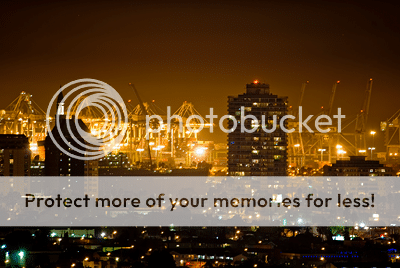kidchill
TPF Noob!
- Joined
- Jan 27, 2008
- Messages
- 249
- Reaction score
- 0
- Location
- Brooksville, FL
- Can others edit my Photos
- Photos NOT OK to edit
Let me see if I got this right....
If I want "no to almost no loss" (and this is what I do) I shoot RAW, set what I want, then saveas TIFF, and then if I want more editing I do it in CS3 and save it as TIFF (so there's no compression) and then when I want to internet post I resize, re-quality, and save as JPG. My only true loss of data should be at the TIF to JPG point, correct? 'Cause if there's loss of data at the RAW to TIFF (not counting the data I threw away by editing...because that's what I wanted to do!!) then RAW is useless.
And if I shoot JPG, I just make my changes, saveas TIF and then get it webready as JPG just to avoid double saving in JPG format. If I see something I don't like after posting, then I still have my TIF to mess with and I'm not JPG to TIF to JPG to TIF....You get the idea....
This is how I do it, and think it works. Maybe this will also help out the others with file format questions...Unless I'm totally wrong on my thinking....Then we're all screwed!!
If I want "no to almost no loss" (and this is what I do) I shoot RAW, set what I want, then saveas TIFF, and then if I want more editing I do it in CS3 and save it as TIFF (so there's no compression) and then when I want to internet post I resize, re-quality, and save as JPG. My only true loss of data should be at the TIF to JPG point, correct? 'Cause if there's loss of data at the RAW to TIFF (not counting the data I threw away by editing...because that's what I wanted to do!!) then RAW is useless.
And if I shoot JPG, I just make my changes, saveas TIF and then get it webready as JPG just to avoid double saving in JPG format. If I see something I don't like after posting, then I still have my TIF to mess with and I'm not JPG to TIF to JPG to TIF....You get the idea....
This is how I do it, and think it works. Maybe this will also help out the others with file format questions...Unless I'm totally wrong on my thinking....Then we're all screwed!!








![[No title]](/data/xfmg/thumbnail/37/37603-739c5d9b541a083a12f2f30e45ca2b7b.jpg?1734170731)

![[No title]](/data/xfmg/thumbnail/37/37602-1ef8dbb1c2d0e4ff347ee65d328c3603.jpg?1734170730)


